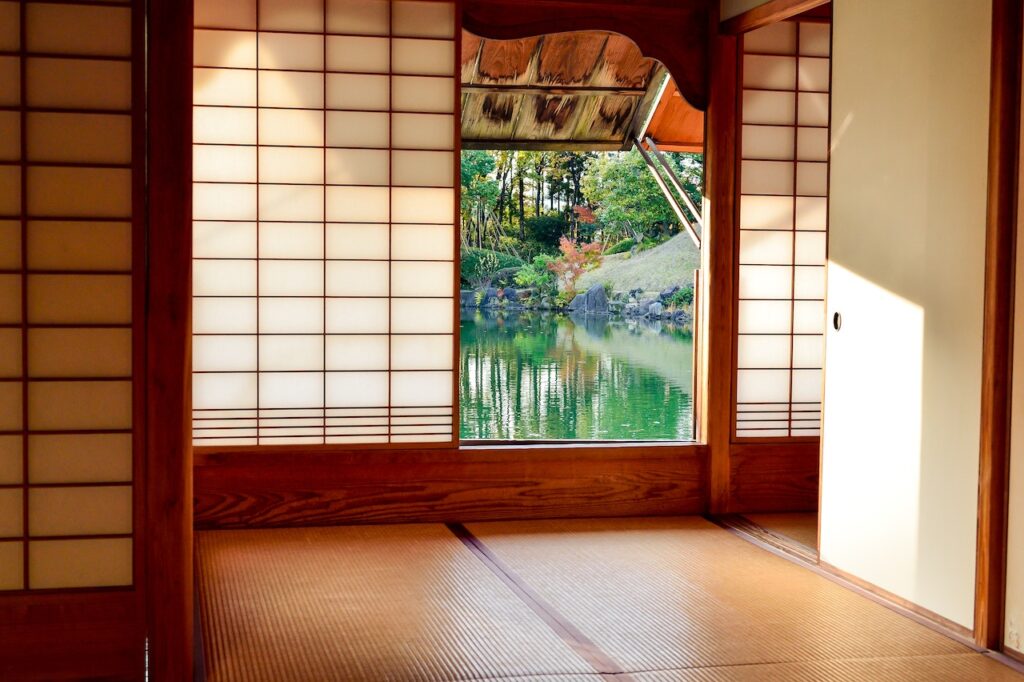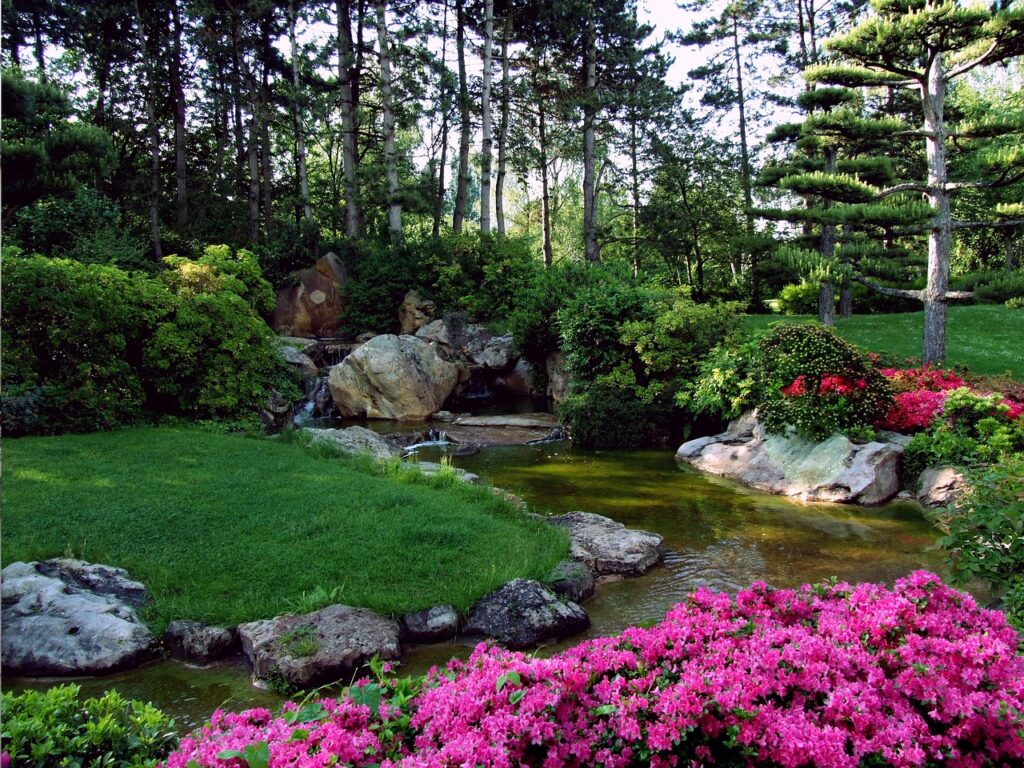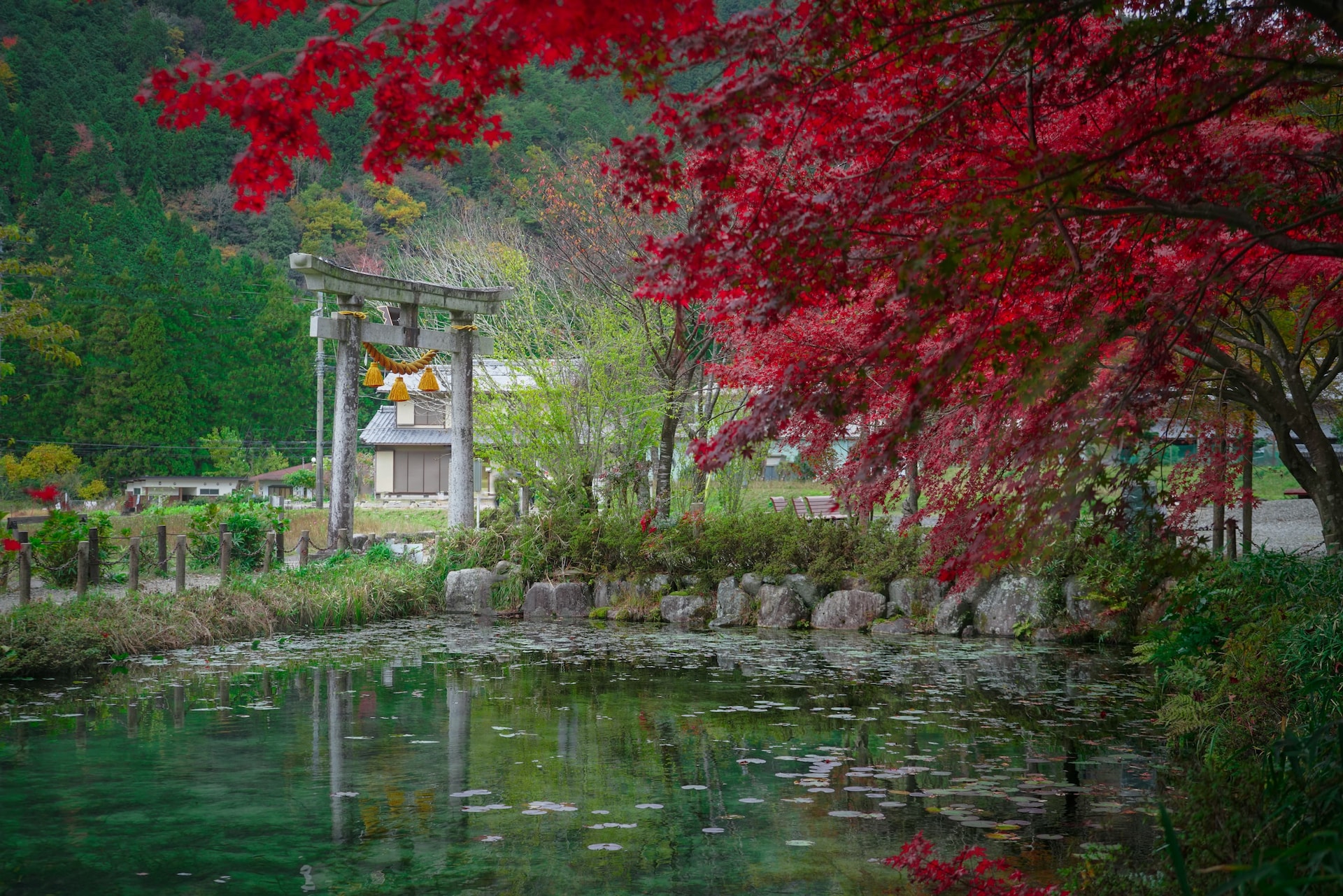Introduction: Exploring the Tranquility of Japanese Gardens in Shiatsu Practice
Japanese gardens have been cherished for centuries for their ability to create tranquil and meditative spaces, making them an integral part of shiatsu practice. Shiatsu, a traditional Japanese healing art, focuses on balancing the body’s energy flow. The serene and harmonious atmosphere of Japanese gardens enhances the therapeutic experience for both practitioners and clients, providing a sense of calm and unity. Inspired by the principles of Zen philosophy, these gardens symbolize balance, harmony, and a deep connection with nature. By incorporating elements such as rocks, water features, and carefully selected plants, Japanese gardens evoke a sense of tranquillity that supports the practice of shiatsu.
The use of Japanese gardens in shiatsu practice is not a coincidence; it is deeply rooted in the cultural and spiritual traditions of Japan. These gardens offer a space for healing, relaxation, and self-reflection. They provide a sanctuary away from the fast-paced modern world, allowing individuals to reconnect with their inner selves and nature. In the following sections, we will explore the significance of Japanese gardens in shiatsu practice, the elements commonly found in these gardens, the principles and philosophies behind their design, and their role in promoting mindfulness and inner peace.
Importance of Japanese Gardens in Shiatsu Practice
Japanese gardens hold immense significance in the practice of shiatsu, as they create an environment that promotes relaxation, mindfulness, and overall well-being. The principles of Zen philosophy heavily influence the design of Japanese gardens in shiatsu practice, emphasizing simplicity, subtlety, and the use of natural materials. These gardens symbolize a deep connection with nature and help individuals find a sense of balance and harmony within themselves.
For example, when a shiatsu practitioner and client enter a Japanese garden, they are enveloped by a serene and peaceful atmosphere. The carefully arranged rocks, representing strength and stability, create a sense of grounding and stability. The water features, such as ponds and trickling streams, bring a soothing presence and mimic the movement of water found in nature. The sound of flowing water adds to the calming ambience of the garden. The overall design of the garden, with its careful selection of plants and incorporation of the surrounding scenery, allows practitioners and clients to experience a profound sense of tranquillity and inner peace.
Elements of Japanese Gardens in Shiatsu Practice
Japanese gardens designed for shiatsu practice incorporate various elements that contribute to their tranquil and harmonious atmosphere. Each element serves a specific purpose and enhances the overall experience of being in the garden. These elements include rocks, water features, gravel, sand, and carefully selected plants. The integration of these elements creates a space that promotes mindfulness, relaxation, and a deep connection with nature.
In a Japanese garden designed for shiatsu practice, rocks are strategically placed to represent mountains and islands, symbolizing strength, stability, and grounding. They serve as focal points for meditation and provide a sense of balance. Water features, such as ponds and trickling streams, bring a soothing presence and mirror the movement of water in nature. The sound of flowing water adds to the calming atmosphere. Gravel and sand are used to symbolize flowing water and encourage mindfulness. They represent the transient nature of life and help individuals focus their attention on the present moment. The selection of plants in Japanese gardens emphasizes harmony and balance with nature, with evergreen trees, mosses, and flowering shrubs chosen for their aesthetic appeal and ability to blend harmoniously with the surroundings. Additionally, the design of Japanese gardens incorporates the principle of the borrowed landscape, seamlessly integrating the surrounding scenery into the garden’s design and creating a sense of unity with the natural environment.
For instance, picture a Japanese garden designed for shiatsu practice with a carefully arranged rock formation resembling a miniature mountain range. Water gently flows through the garden, creating a peaceful and calming sound. Gravel and sand areas are strategically placed to encourage mindfulness and provide a sense of flow. The selection of plants includes evergreen trees, such as pine and maple, along with mosses and flowering shrubs that add vibrancy and harmony to the garden. The incorporation of elements from the surrounding scenery, such as distant mountains or nearby trees, creates a seamless transition and enhances the overall tranquillity of the space.

Principles and Philosophies in Japanese Garden Design
Japanese gardens follow specific principles and philosophies that contribute to their tranquil and harmonious nature. These principles guide the design process and aim to create spaces that promote mindfulness and inner peace. Reductionism is a fundamental principle in Japanese garden design, involving decluttering and arranging key elements to achieve balance and harmony. The use of natural materials, such as rocks, plants, and gravel, helps create a sense of calm and unity within the garden. Asymmetry is another important aspect, bringing a sense of naturalness and authenticity to the design. Simplicity and subtlety are key principles that limit the colour palette, embrace empty space, and choose minimal elements. Water elements play a vital role in Japanese garden design, symbolizing purity, tranquillity, and adaptability. Pathways and lanterns serve as physical and mental guides, encouraging visitors to slow down, be mindful, and immerse themselves in the tranquillity of the space. Lanterns also symbolize enlightenment and add to the overall atmosphere of the garden.
For example, the principle of reductionism can be observed in a Japanese garden designed for shiatsu practice by carefully selecting and arranging key elements, such as rocks, water features, and plants. By decluttering the space and focusing on essential elements, a sense of balance and harmony is achieved. The asymmetry in the design adds to the naturalness and authenticity of the garden, reflecting the imperfections found in nature. Simplicity and subtlety are integral to Japanese garden design, as they create a sense of calm and allow visitors to appreciate the beauty of minimalism. Water elements, such as ponds or raked sand, symbolize purity and tranquillity, while pathways and lanterns guide individuals through the garden, inviting them to slow down, be present, and immerse themselves in the peaceful surroundings.
Creating a Meditative Environment
Japanese gardens in shiatsu practice serve as spaces that promote mindfulness, non-judgmental awareness, and centring. These gardens are intentionally designed to create an environment that supports a meditative experience. In addition to the elements discussed earlier, other aspects contribute to the overall tranquillity of the garden. Lighting elements, such as lanterns, are often incorporated to enhance the meditative experience and symbolize enlightenment. Sound elements, like gently flowing water or wind chimes, contribute to a calming atmosphere and help establish a sense of tranquillity within the garden.
For instance, imagine a Japanese garden for shiatsu practice with lanterns strategically placed along the pathways. As the sun sets, these lanterns emit a soft, warm light, creating a serene and enchanting atmosphere. The gentle glow of the lanterns not only illuminates the garden but also serves as a guide for practitioners and clients, inviting them to slow down and be present. The sound of gently flowing water or wind chimes further enhances the meditative experience, providing a soothing and melodic backdrop for shiatsu treatments.
Designing and Maintaining a Japanese Garden for Shiatsu Practice
Designing and maintaining a Japanese garden for shiatsu practice requires careful planning and consideration. Every aspect of the garden, from the selection of plants to the arrangement of rocks and water features, plays a crucial role in creating a tranquil and harmonious environment. Plant selection should prioritize harmony and balance with nature, ensuring that the chosen plants complement the overall aesthetic of the garden. Regular pruning, weeding, and seasonal care are necessary for maintaining the garden’s health and preserving its beauty. Creating a dedicated meditation space within the garden allows practitioners and clients to have a focused and immersive experience during shiatsu sessions.
For example, when designing a Japanese garden for shiatsu practice, it is important to consider the principles and philosophies mentioned earlier. The selection of plants should take into account their growth habits, colours, and textures, aiming for a harmonious blend with the overall design. Evergreen trees and shrubs can provide year-round interest and maintain the garden’s beauty even in colder seasons. Mosses and ferns can be used to create lush ground cover, adding a sense of tranquillity and grounding. Regular pruning and shaping techniques, such as “Niwa-zumi” or garden pruning, should be applied to maintain the desired form and aesthetics of the plants. By incorporating a dedicated meditation space within the garden, practitioners and clients can have a designated area for stillness, introspection, and deep relaxation.

The Healing Properties of Japanese Gardens
Japanese gardens in shiatsu practice offer more than just a visually appealing environment. They enhance the healing experience through their serene and calming atmosphere. The combination of natural elements, design principles, and cultural influences creates a space that supports relaxation, mindfulness, and overall well-being. In addition to the physical aspects of the garden, the use of essential oils and incense further complements the healing properties of shiatsu. Japanese gardens are deeply intertwined with cultural and psychological traditions, influencing holistic practices such as Morita therapy and Naikan reflection, which emphasize self-awareness and personal growth.
The healing properties of Japanese gardens can be attributed to their ability to evoke a sense of tranquillity, promote mindfulness, and provide a connection with nature. Research has shown that spending time in nature can have a positive impact on mental and physical health, reducing stress, improving mood, and increasing overall well-being. Japanese gardens, with their carefully designed elements and harmonious atmosphere, offer a unique and immersive experience that can enhance the healing process. The combination of shiatsu, a hands-on therapeutic approach, and the serene environment of a Japanese garden creates a powerful synergy that supports the body’s natural healing abilities.
Japanese Gardens and Community Well-being
The impact of Japanese gardens extends beyond individual healing experiences; they also play a role in promoting community health and well-being. Research has shown that exposure to Japanese gardens has a soothing effect on mood and lowers pulse rate. These gardens provide a space for individuals to connect with nature, find tranquillity, and experience a sense of wonderment. They serve as civic spaces that encourage meditative experiences and foster a sense of community.
Japanese gardens, whether in public parks, cultural centres, or private spaces, have the potential to bring people together and create a sense of belonging. They offer a sanctuary away from the noise and stress of urban environments, providing an oasis of calm and natural beauty. Japanese gardens can serve as venues for community events, such as mindfulness workshops, yoga classes, or cultural celebrations, bringing people from diverse backgrounds together and nurturing a sense of unity. These gardens provide an opportunity for individuals to slow down, reconnect with their surroundings, and experience the benefits of nature on their overall well-being.
Incorporating Japanese Gardens into Shiatsu Practice
Shiatsu practitioners can incorporate Japanese gardens into their practice to enhance the therapeutic experience for their clients. The serene and harmonious setting of a Japanese garden provides an ideal environment for relaxation, mindfulness, and overall well-being. The beauty and tranquillity of these gardens create a conducive atmosphere for shiatsu treatments, allowing both practitioners and clients to enter a state of deep relaxation and connection with nature.
For example, a shiatsu session taking place in a Japanese garden allows the client to immerse themselves in a tranquil and harmonious environment. The natural elements, such as the sound of flowing water and the gentle rustling of leaves, create a soothing backdrop for the treatment. The practitioner can utilize the design and elements of the garden to enhance the therapeutic effects of shiatsu, guiding the client towards a state of balance and well-being.
Conclusion:
Embracing Tranquility and Balance in Shiatsu Practice with Japanese Gardens
Japanese gardens hold a special place in shiatsu practice, offering a serene and meditative environment that supports healing and well-being. These gardens, influenced by the principles of Zen philosophy, symbolize balance, harmony, and a deep connection with nature. Through careful design and the incorporation of natural elements, Japanese gardens in shiatsu practice create tranquil spaces that promote mindfulness, inner peace, and overall well-being. By embracing the tranquillity and balance found in these gardens, practitioners can enhance the therapeutic experience of shiatsu, fostering a sense of harmony and healing.
Incorporating Japanese gardens into shiatsu practice not only enhances the therapeutic experience but also deepens the connection between the practitioner, the client, and the natural world. The serene and harmonious atmosphere of these gardens provides a sanctuary for relaxation, mindfulness, and inner peace. By immersing oneself in the tranquillity and beauty of a Japanese garden, one can experience a profound sense of balance and well-being. Whether used as a backdrop for shiatsu sessions or as a space for personal reflection and meditation, Japanese gardens offer a unique and transformative experience that can enrich the practice of shiatsu and promote overall health and wellness.




